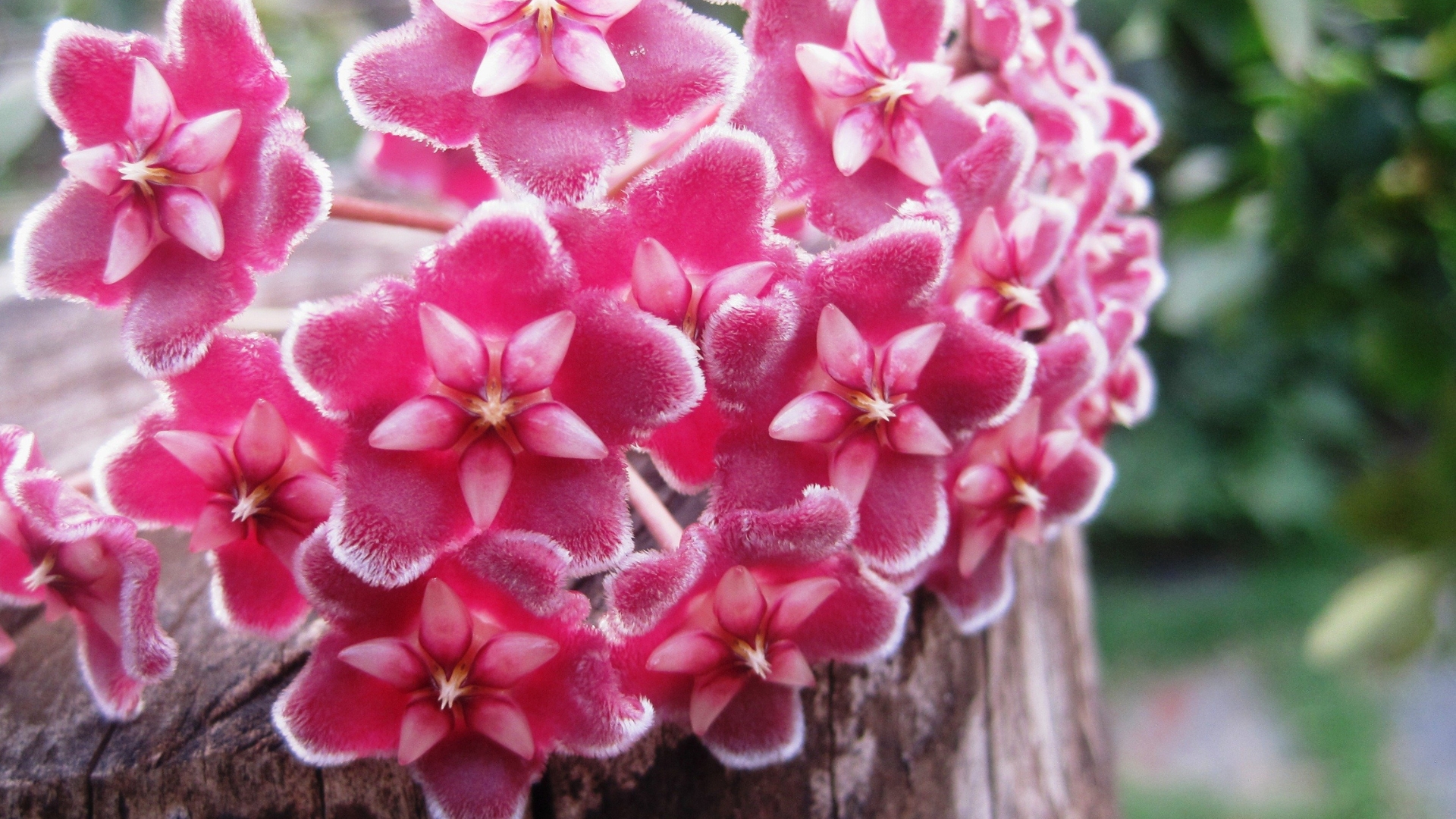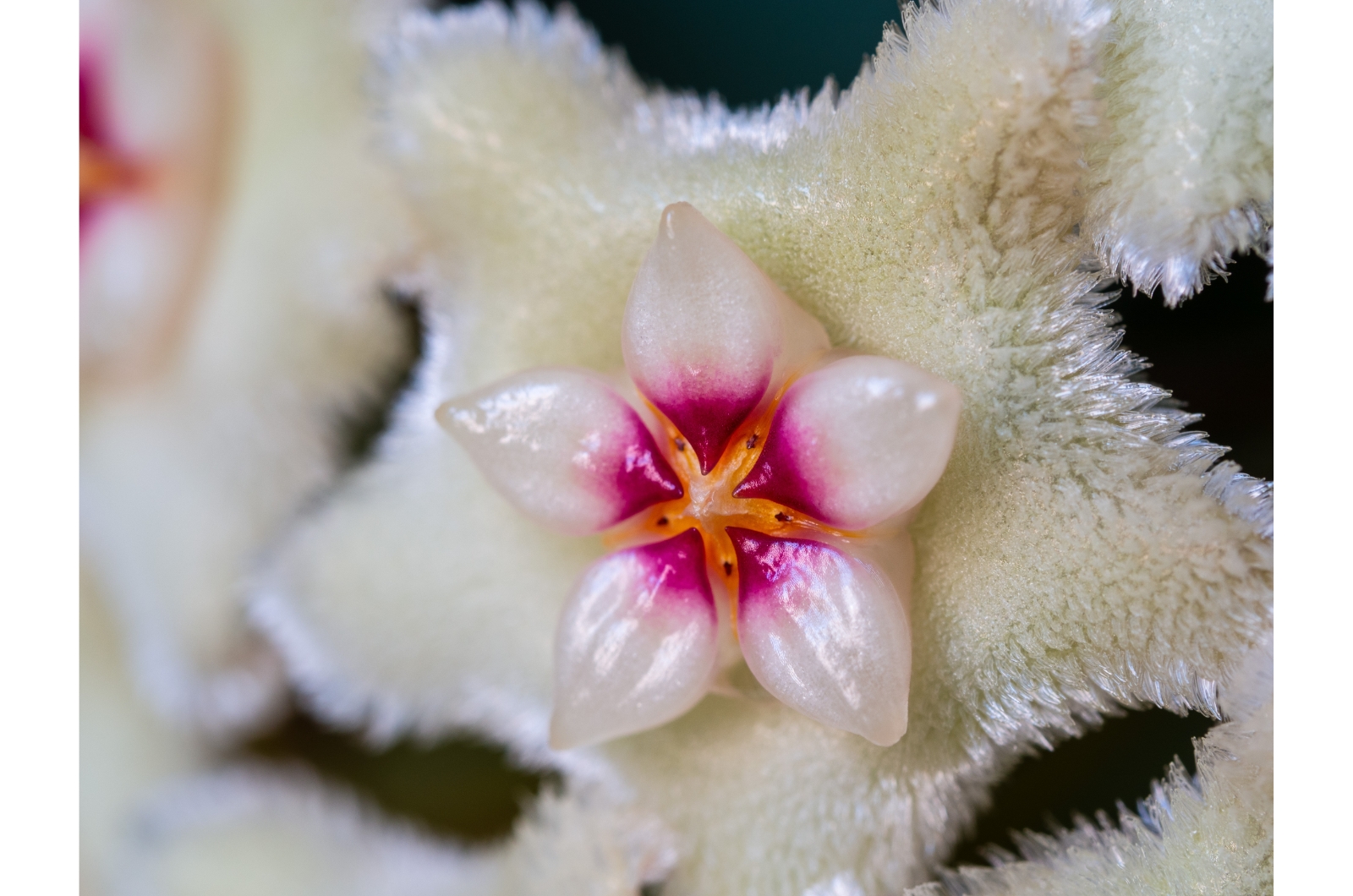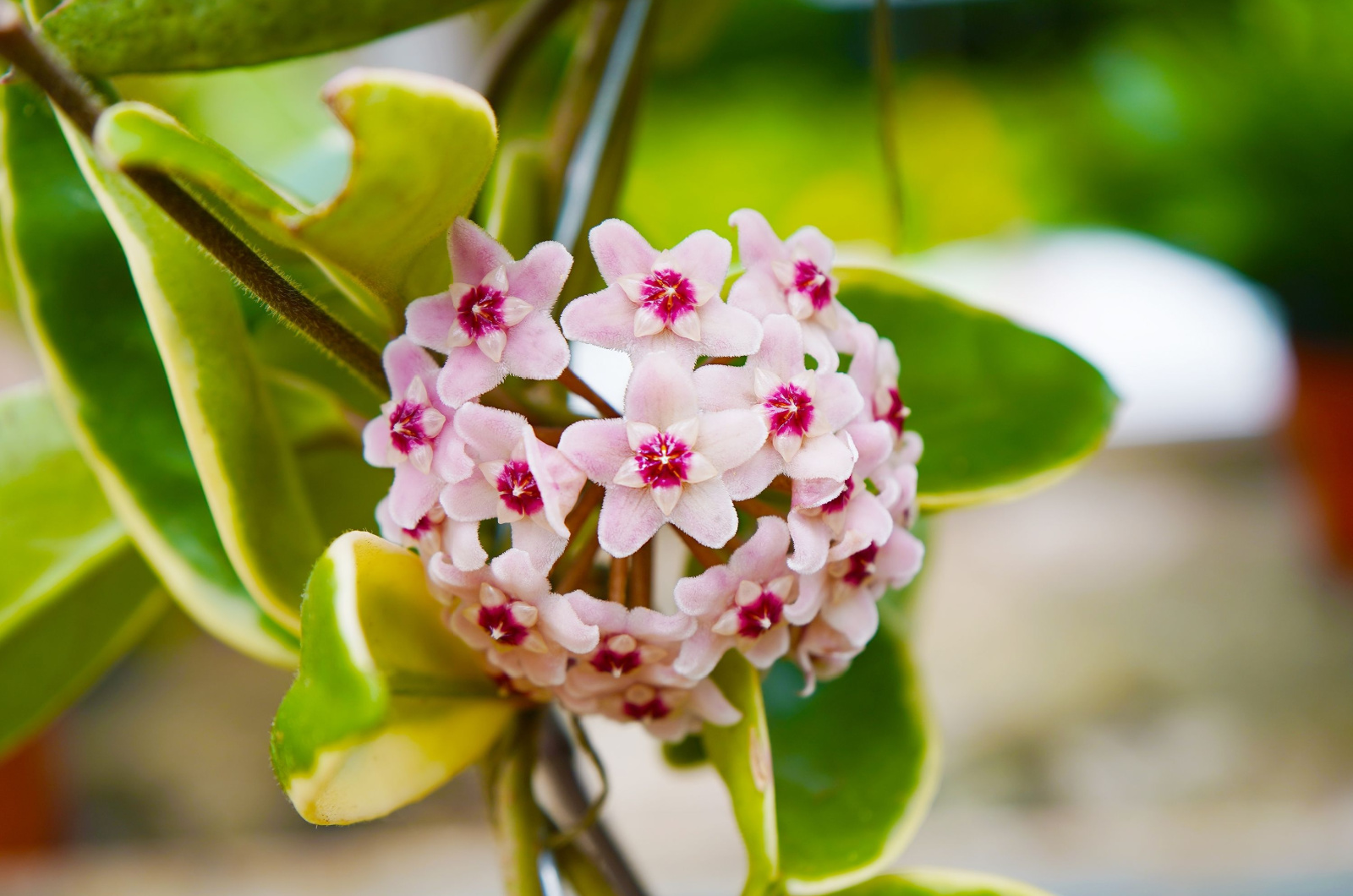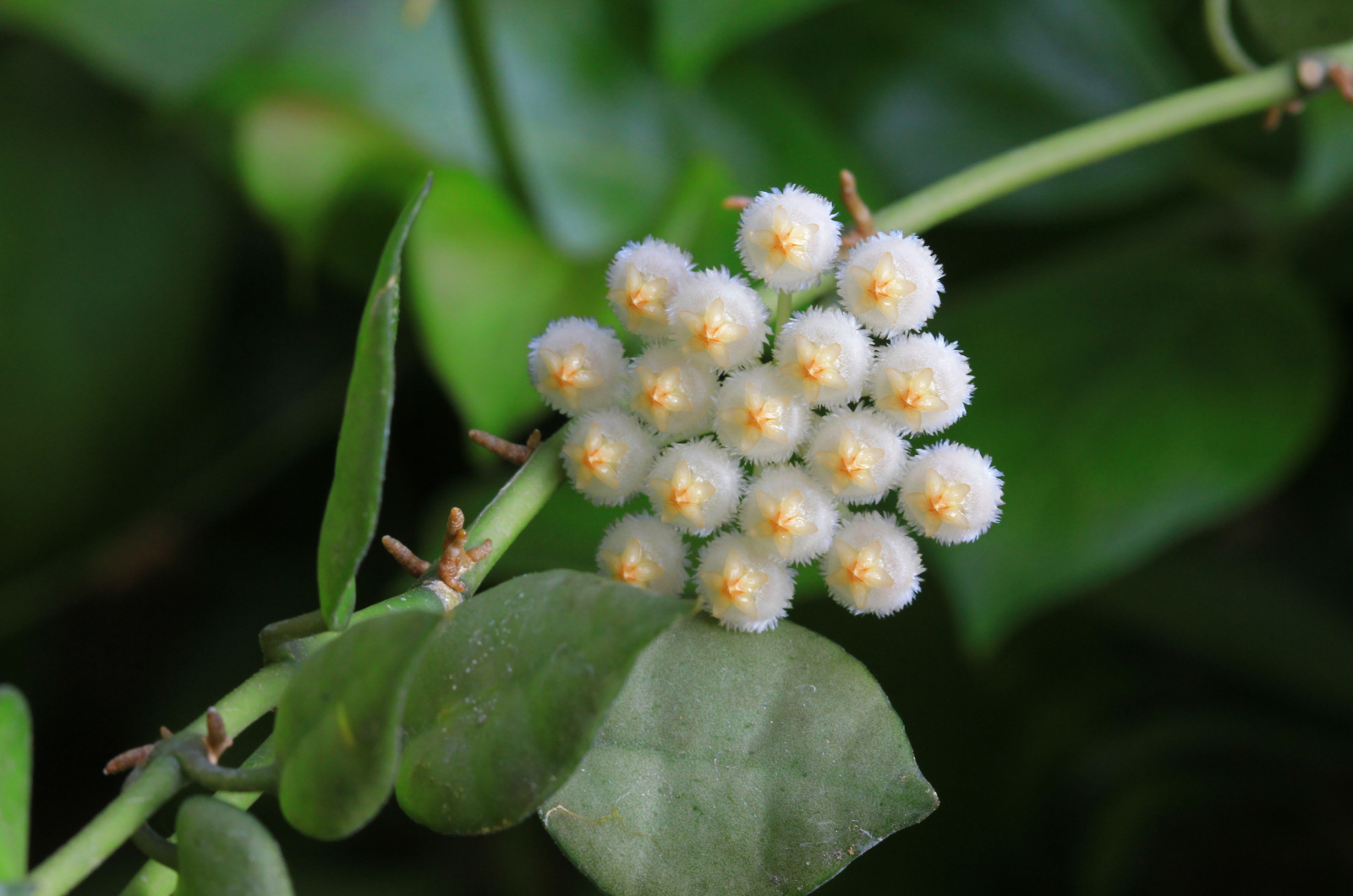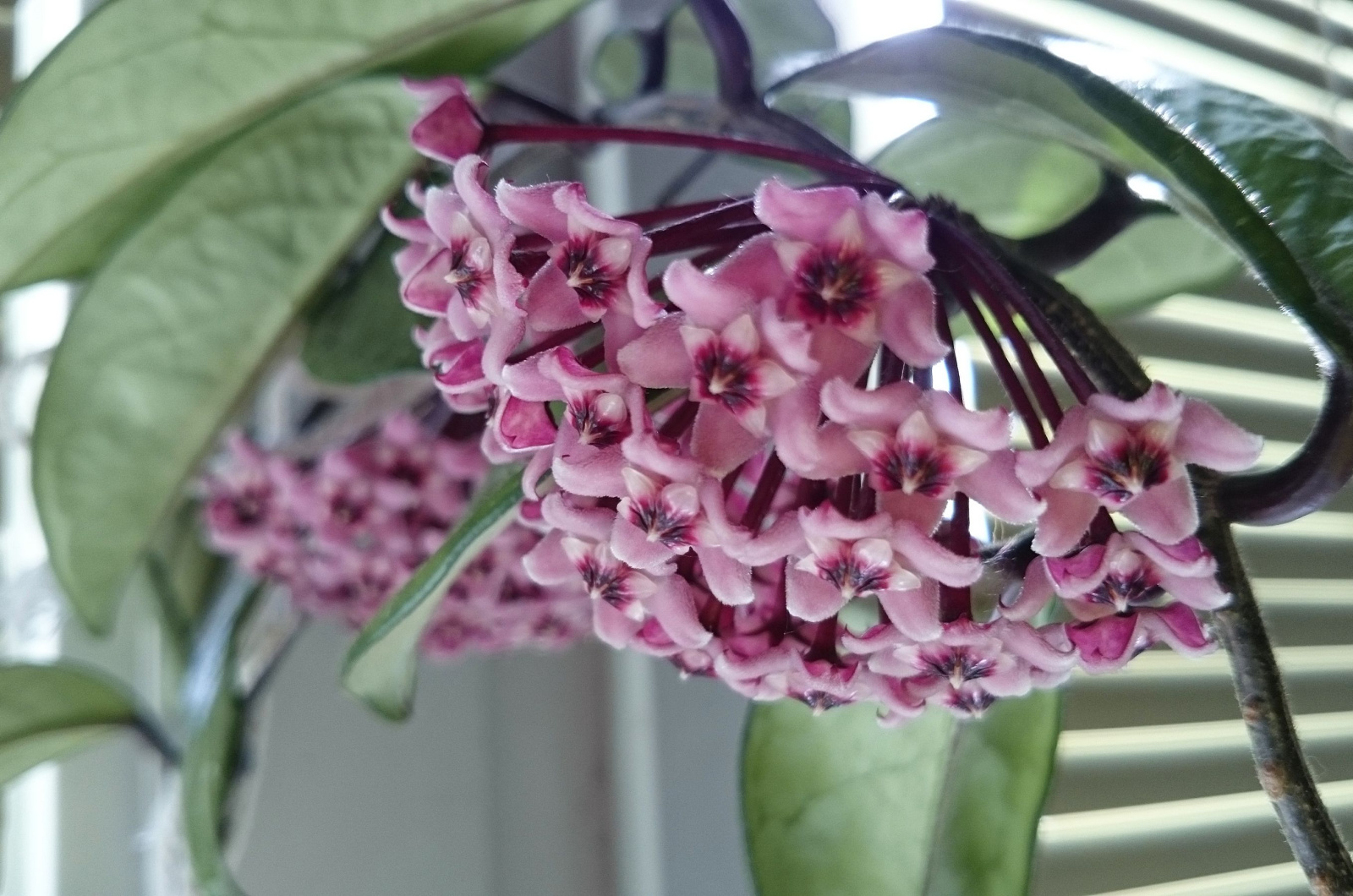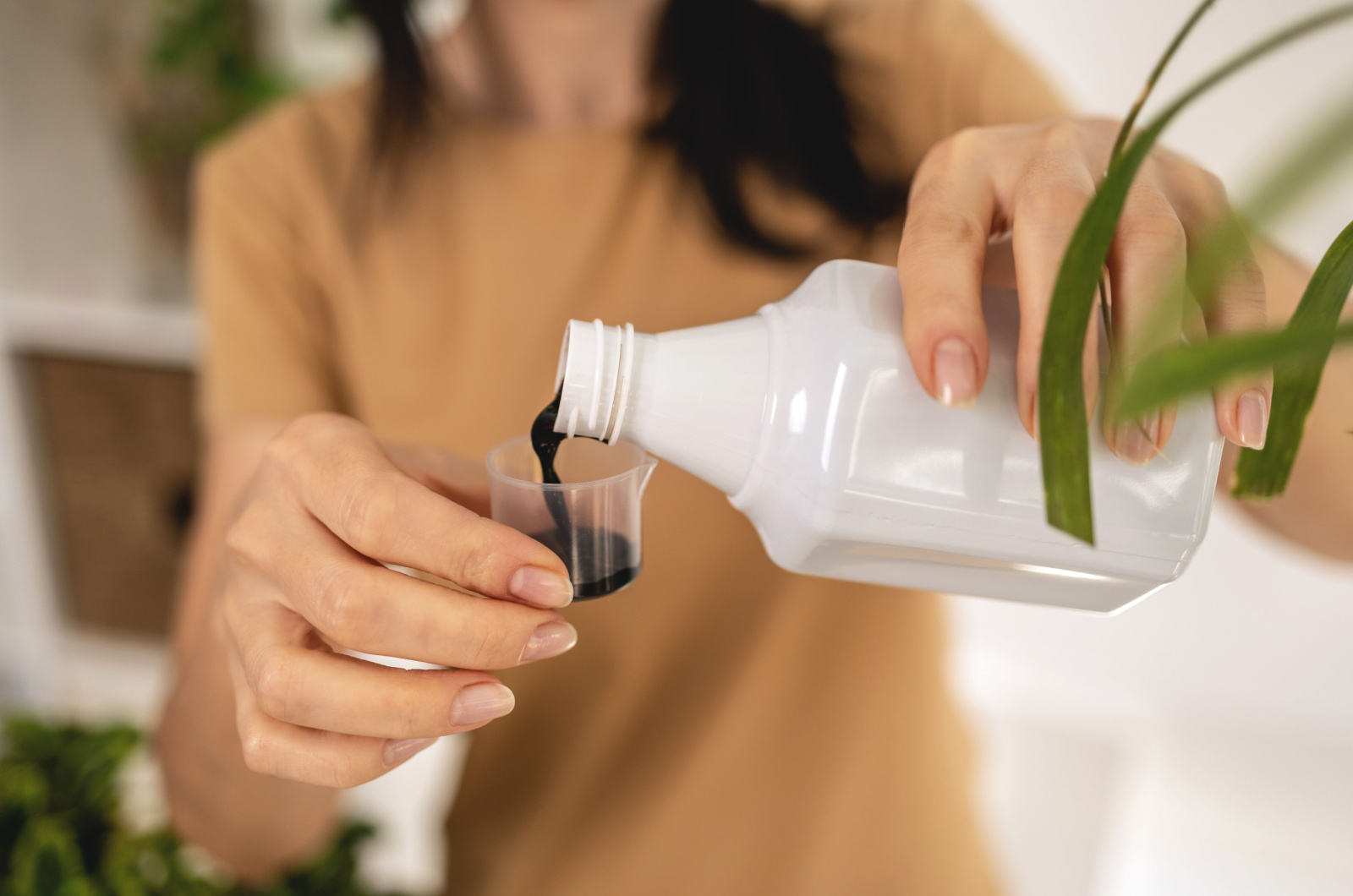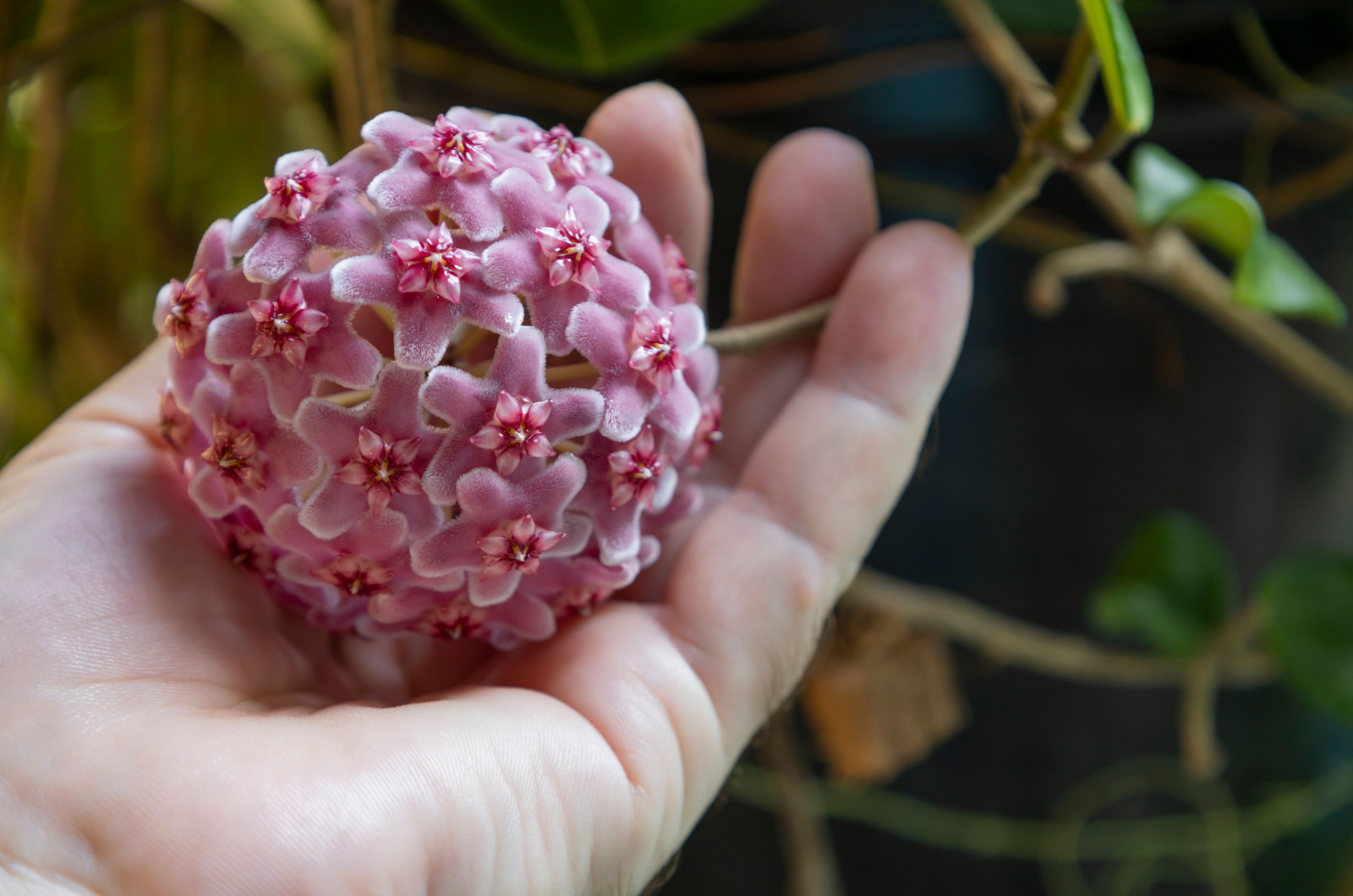I know, I know! We mainly grow hoyas for their thick, waxy foliage. But what’s wrong with bringing a little color into your life?
These plants can do both! Give them the right amount of water, light, and fertilizer, and you may be the lucky gardener that can enjoy their hoya blossoms.
But I have to warn you! It’s not going to be easy! Hoya flowers are not a guarantee since these are foliage plants before anything else.
Yet, the following tips will bring you one step closer to colorful hoyas!
Let’s get started!
Hoya Flowers
As I already mentioned, hoya flowers may not always appear. You can give them everything they need and still not enjoy the colorful blossoms.
They are hard to bloom, which makes gardeners appreciate their flowers even more.
So, why bother trying this in the first place? Because the blossoms are gorgeous. Tight umbels bear an array of white, pink, or burgundy starry flowers against larger, more delicate star-shaped petals.
P.S. Hoyas usually bloom in spring and summer, although some species may extend their flowering season into fall.
#1 Do You Have The Right Species?
There are many hoya varieties you can choose from. Yet, some are more likely to bloom than others.
Not all hoya species are suitable for indoors. But those that are have a good chance of producing blossoms at some point in their lifetime.
Hoya carnosa is one of the most popular types out there, but it’s not the only one. Hoya kerrii is another famous hoya houseplant that will bloom.
#2 Is Your Hoya An Adult?
If you have a Hoya lacunosa or any other variety, know that they won’t flower until they are mature enough.
Some species need to be 2-5 years old before they can produce blossoms. So, if you’ve started your hoya from cuttings this year, be patient! They won’t flower before they’re an adult!
Another thing about mature hoyas is that they are usually a little potbound. This means they can direct energy into producing flowers rather than the roots.
So, don’t repot your hoyas too soon!
#3 What About Its Light Requirements
Hoya macgillivrayi and any other species of this plant need dappled sunlight to thrive and flower.
Of course, you can’t get these exact conditions indoors, but 10 feet away from a window and on top of a flower shelf is too little for your hoya.
In fact, we often give these plants less light than they need for flowering. Usually, all it takes is moving it closer to a bright window and you’ll notice some blossoms.
Aim to expose your hoyas to at least 4-6 hours of bright indirect sunlight each day.
A good rule of thumb is placing it a couple of feet away from your brightest window. Make sure your hoya is never in direct sunlight and it will flourish.
Pro tip: If your home doesn’t receive enough sunlight, you can always supplement it with artificial lights.
#4 Hoya Water And Humidity Needs
Hoya retusa and other hoya species thrive in humid environments, like most tropical houseplants.
Ensure these plants get at least 40-60% relative humidity and you’ll increase their flowering chances. My favorite technique is turning on a humidifier, but you can also try misting.
Now a word about watering! When we hear the word tropical we immediately assume that we need to drench our houseplants in water or they will die. That couldn’t be farther from the truth!
In fact, hoya plants love to be on the dry side. That means you should wait until the top 2-3 inches of the growing medium are dry before irrigating them.
Of course, don’t let the substrate dry out completely or that will lead to underwatering stress.
#5 Use The Right Fertilizer
Hoya fungii and other types of this plant need a balanced houseplant fertilizer to thrive. Yet, if you want to encourage them to bloom, use a phosphorus-rich plant food.
Fertilizers for African violets work exceptionally well. But don’t let the name fool you! They can benefit most blooming plants, not just African violets.
Or you can start with fish emulsion and work your way up!
Feed your hoyas phosphorus-rich fertilizer about 2 months before their usual blooming time. This will encourage them to set buds and give them a higher chance of producing flowers.
I Got Blossoms vs Nothing Happened
If you follow these steps, there are two things that can happen: setting buds and nothing at all.
Say you’re lucky enough to get hoya buds on your first try. Don’t change a thing! Keep your plant in the same environment and provide it with the same care until it flowers.
I did all this and not a single bud appeared!
Don’t worry! The same thing happened to me and my hoya! You’ll have to check whether your plant is getting everything it needs! My problem was usually lack of sunlight.
Yet, your plant may experience other issues. Another cause of a lack of blooming is inadequate fertilizer. Don’t give your hoyas too much nitrogen or they will produce gorgeous leaves at the expense of blossoms.
And remember! These plants are among the toughest tropicals to flower. Provide them with the best care and wait! Who knows? Buds may surprise you when you least expect them!

